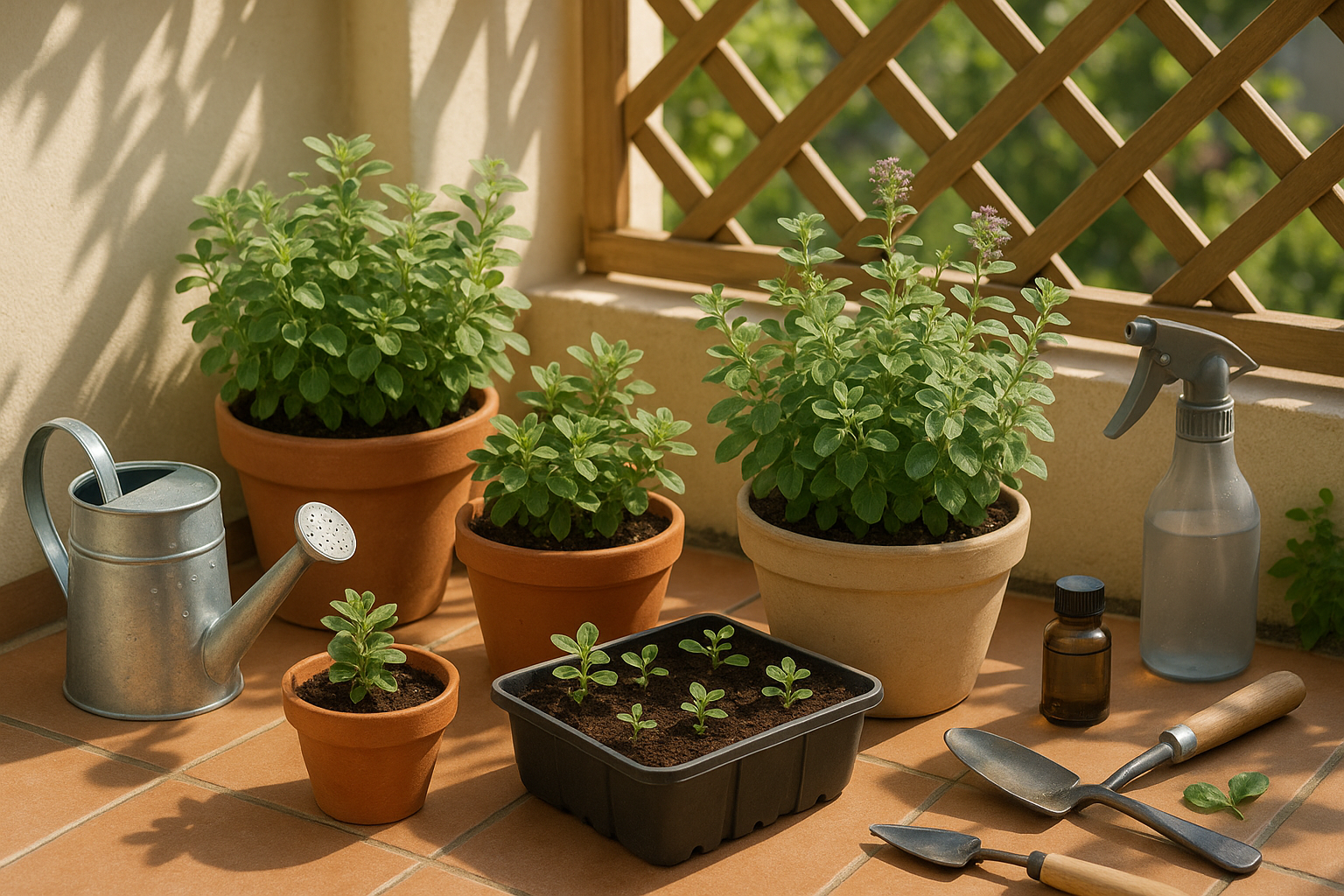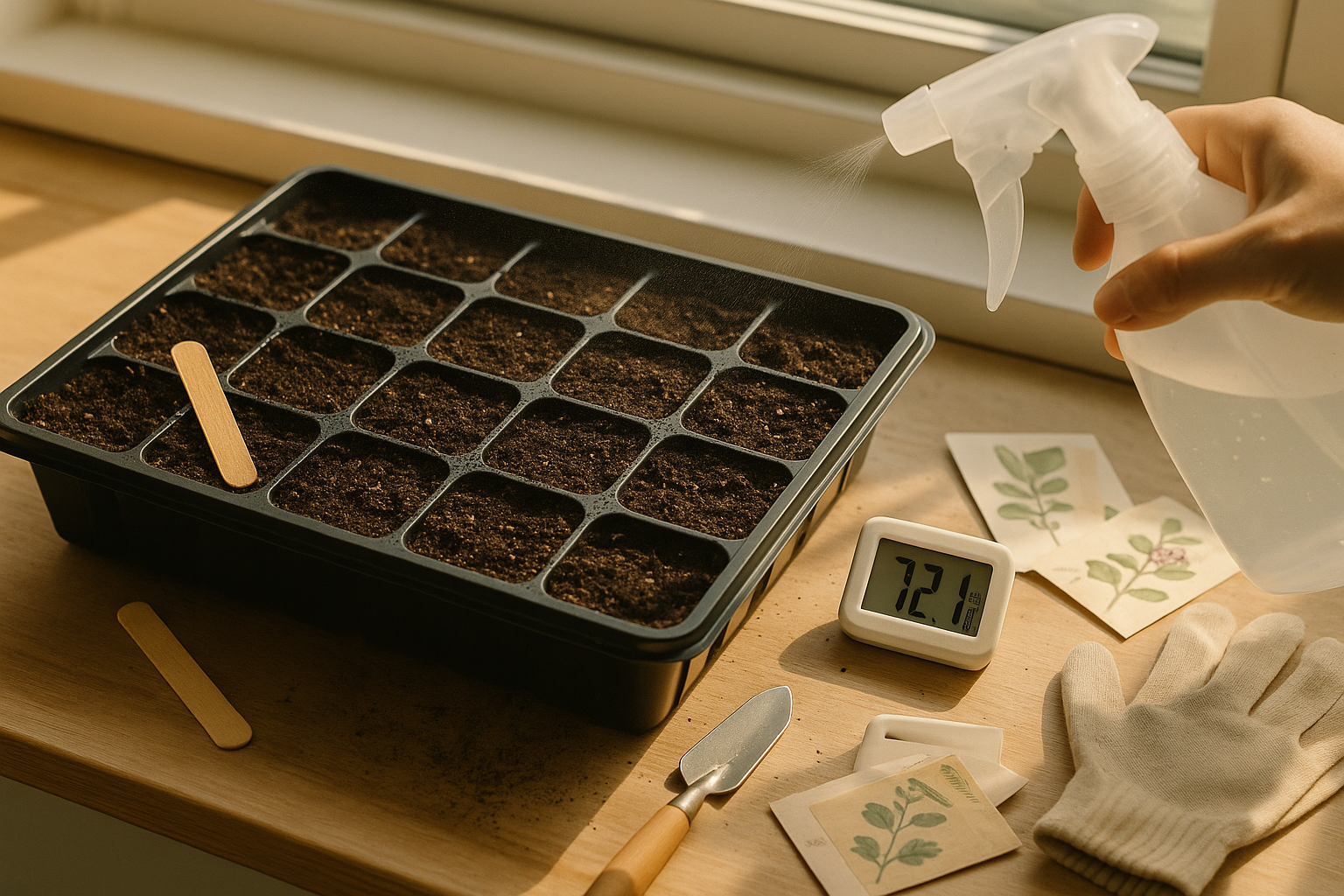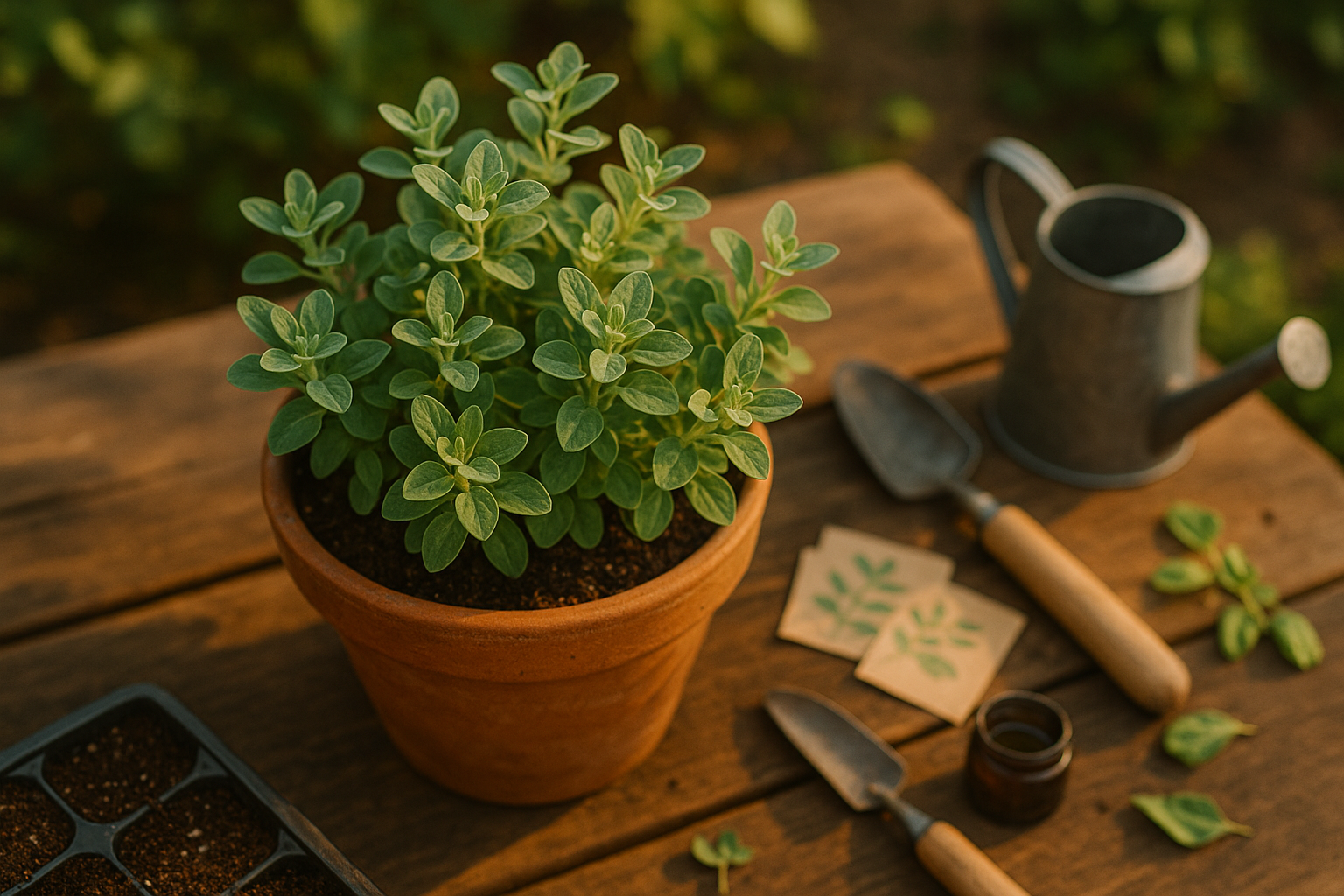Introduction
Watering marjoram can make all the difference between thriving, fragrant herbs and struggling, wilted plants. Marjoram, beloved for its sweet, aromatic flavor, is a staple in kitchens and herbal medicine cabinets worldwide. Whether you’re growing it on a sunny windowsill or in a backyard herb patch, proper watering is key to helping the plant flourish. Too much water risks root rot, while too little can cause the plant to dry out before you get the chance to harvest those tender leaves for your favorite dishes.
Figuring out how often to water marjoram isn’t always straightforward, especially when factors like weather, pot size, and soil type come into play. In this post, we’ll break down exactly what marjoram needs to stay healthy. You’ll find easy-to-follow tips and learn how to adjust your watering routine for different climates and growing conditions. Whether you’re a beginner or an experienced herb gardener, this practical advice will help your marjoram thrive, so you can enjoy fresh, flavorful leaves whenever you like. Let’s dive into the best practices for watering marjoram and keeping your plants at their best.
Understanding Marjoram’s Water Needs

Marjoram, a fragrant herb native to the Mediterranean region, thrives in warm temperatures, low humidity, and well-draining, sandy soils. These native conditions have shaped marjoram’s impressive drought tolerance, making it far less thirsty than many garden plants. During its natural growth cycle—rapid growth in the warmer spring and summer months, followed by slowed activity or dormancy in cooler seasons—marjoram’s water requirements shift accordingly.
In its active growing period, marjoram benefits from consistent but moderate moisture to support leafy growth and abundant blooms. However, it quickly suffers if the roots remain waterlogged. Because marjoram is adapted to survive dry spells, underwatering is rarely an issue; the first signs might be drooping leaves or a brief halt in growth, both usually easily fixed with a thorough watering. Overwatering, on the other hand, is a more serious problem. Consistently damp soil can suffocate roots, causing yellowing leaves, root rot, and even plant death.
Gardeners growing marjoram outdoors may find that rainfall provides sufficient moisture, especially in cooler months, so it’s best not to water on a fixed schedule. Instead, check the top inch of soil and water only when it feels noticeably dry to the touch. For marjoram grown in pots, which dry out faster and require closer attention, make sure containers have drainage holes and use a gritty, free-draining potting mix. A good rule of thumb is to let the soil dry out between waterings, mimicking marjoram’s adaptation to infrequent rains in its native habitat.
By understanding both the plant’s Mediterranean origins and its natural cycles, you’ll avoid common mistakes and help your marjoram thrive with just the right amount of watering marjoram.
Factors Affecting Watering Frequency for Marjoram
Several factors determine how often you’ll need to water marjoram, and understanding each can help your plant thrive. First, consider your soil type: well-drained soil, ideal for marjoram, dries out faster and usually requires more frequent but lighter watering. In contrast, dense or clay soils retain moisture longer, meaning less frequent watering but a higher risk of root rot if you overdo it.
Sun exposure is another crucial factor. Marjoram grown in full sunlight will dry out more quickly than plants in partial shade and generally needs more water, especially during intense summer heat. Temperature and humidity also play major roles. In hot or dry climates, water evaporates from the soil and leaves faster, so you’ll need to hydrate your marjoram more often. Conversely, cooler or more humid environments slow evaporation, reducing watering frequency.
Where you plant marjoram—whether in pots or garden beds—also matters. Potted marjoram dries out quicker because containers limit how much moisture the soil can hold and are exposed on all sides, requiring daily soil checks during warm weather. Ground-planted marjoram, especially in mulched beds, retains moisture longer.
Finally, the age of your marjoram affects watering needs. Seedlings and young transplants have shallow roots and are more vulnerable to drying out, benefiting from frequent, gentle watering until established. Mature plants with deeper roots are generally more drought-tolerant and can go longer between watering sessions. By considering these factors, you can fine-tune your watering routine to keep your marjoram healthy in any environment.
How Often Should You Water Marjoram?

When it comes to watering marjoram, a flexible approach helps keep your plants healthy. Outdoor marjoram, once established, prefers deep, infrequent watering rather than daily sprinkles. During spring and summer, check the top inch of soil and water when it feels dry. This usually means watering every 7-10 days, though you may need to water more often during hot, dry spells.
For potted marjoram, soil moisture changes more quickly due to limited soil volume. In the warmer months of active growth, check the soil every couple of days. Water thoroughly when the top inch is dry, allowing excess water to drain to prevent soggy roots.
In cooler fall and winter months, marjoram’s growth slows, and evaporation decreases. Whether in the garden or containers, it will likely need watering only every two to three weeks. But don’t rely on the calendar alone—rainfall, humidity, and temperature all affect how quickly soil dries out. After a good rain, you might not need to water for over a week, while hot, windy weather could mean watering more often.
The best way to decide when to water marjoram is to feel the soil. If it’s dry to the touch, it’s time to water. It’s better to keep marjoram slightly on the dry side than constantly soggy, as the plant tolerates dry conditions better. Wet soil can lead to root rot, so let your finger, not the calendar, be your guide and adjust watering based on the season and your specific garden or indoor environment.
How to Tell if Your Marjoram Needs Water
When it comes to watering marjoram, paying attention to your plant’s signals is much more effective than following a strict schedule. The clearest sign that your marjoram needs water is wilting—if the stems start to droop and look floppy, your plant is definitely thirsty. Dull or slightly yellowing leaves can also indicate that your marjoram isn’t getting enough moisture.
The soil is another reliable indicator. If it looks light in color, feels powdery, and pulls away from the edges of the pot, it’s likely too dry. A simple finger test is one of the best ways to check soil moisture: poke your finger about an inch deep into the soil. If it feels dry all the way down, it’s time to water.
For an even more accurate reading, especially if you’re a beginner or growing marjoram indoors where conditions can vary, use a moisture meter to check the soil moisture near the roots. Keep in mind, watering marjoram strictly by the calendar isn’t the best approach, since factors like temperature, humidity, and sunlight all affect how quickly the soil dries out.
Overwatering can lead to root rot, so always check your plant and soil before grabbing the watering can. By staying attentive to these signs and avoiding a fixed schedule, you’ll help your marjoram thrive and prevent common issues like water stress or root damage.
Best Practices for Watering Marjoram
When it comes to watering marjoram, a “less is more” approach works best. Deep, infrequent watering is key—give the soil a thorough soak until water penetrates several inches down, then let it dry out before watering again. This encourages marjoram’s roots to grow deep and strong, making the plant more drought-resistant and flavorful.
Avoid watering lightly every day; shallow watering stunts root development and leaves plants vulnerable during hot spells. Always water at the base of the plant rather than overhead. Splashing foliage increases the risk of fungal problems, especially if leaves stay wet for too long.
Watering early in the morning allows excess moisture to dry off in the sun, providing extra protection against diseases like powdery mildew. For gardeners growing marjoram in containers, placing a layer of mulch—such as fine bark or straw—around the base can help slow evaporation and maintain even soil moisture.
In hot climates, or for gardeners who might forget, self-watering pots and devices like watering globes can help keep the soil from drying out too much between waterings. Just be sure not to keep the soil soggy—well-draining soil is essential for marjoram, and a little dryness between waterings will keep your plants healthy and robust all season long.
Troubleshooting Common Watering Issues
When it comes to watering marjoram, it’s easy to either overdo it or neglect this hardy herb. Overwatering is often the main cause of unhappy plants. Watch out for yellowing leaves, wilting despite moist soil, and mushy or foul-smelling stems—these are signs that the roots may be rotting due to overly wet conditions. On the other hand, underwatered marjoram will have wilted, dry, or crispy leaves, and the soil will feel dry about an inch below the surface.
If you suspect overwatering, let the soil dry out completely before watering again. Consider repotting with fresh, well-draining soil if root rot is severe. Trim away any damaged foliage and water only when the top inch of soil feels dry. For underwatered plants, give a thorough watering until water drains from the bottom, then resume checking soil moisture regularly.
Marjoram is quite adaptable and usually bounces back quickly once the right conditions return, so don’t lose hope if your plant looks stressed. Stay attuned to its needs, adjust your watering habits, and your marjoram will likely recover and thrive. Regular observation is key—each plant and environment can differ, so trust your senses and the cues your marjoram gives you.
Conclusion & Quick Reference Table
Watering marjoram is all about finding the right balance—keeping the soil lightly moist without letting it become soggy. As a Mediterranean herb, marjoram prefers well-draining soil and doesn’t like to sit in water. It’s best to water thoroughly, then wait until the top inch of soil has dried out before watering again. In most indoor settings, watering once a week usually works, while outdoor plants may only need watering every 10–14 days, especially if there’s rainfall. Hot or windy weather might require more frequent checks. Always watch for signs like drooping leaves or dry soil and adjust accordingly, since no single schedule fits every home or garden. Use these general guidelines as a starting point, and let your marjoram’s appearance guide you for the best results.
| Condition | Frequency |
|---|---|
| Indoors | Every 7 days |
| Outdoors (spring/fall) | Every 10–14 days |
| Hot/dry weather | Every 4–6 days |
Experiment and adjust for your unique environment—healthy marjoram rewards your attention!
